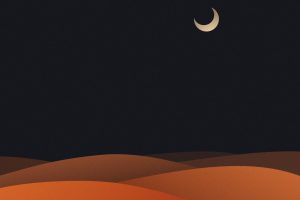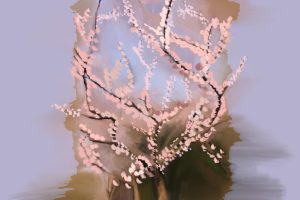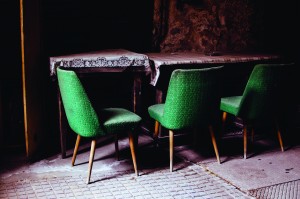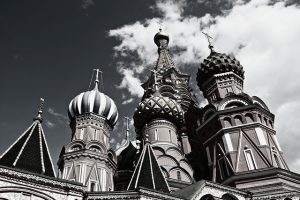
The rune singer: an ancient art revived
by Austin Hagwood | February 18, 2015
On the rim of the Arctic Circle, in a timber house half-buried by snow, Jussi Huovinen sits before a small fire, an arthritic finger poised to pluck a wooden kantele. Dust dances off its steel strings as snowflakes fall against the windowpane. The smell of boiling lamb warms the room. Three hundred meters away, a tower of blackened steel dominates the treeline along the Russian-Finnish border, an ominous reminder of a history inked in bloodshed. Finally, Jussi clears his throat, and Finland’s last rune singer begins his ancient song.
Over 600 kilometers northeast of Helsinki sits the remote village of Hietajärvi, in the region of Viena Karelia, the last place on earth where the ancient art of Finnish rune singing survives. For thousands of years, the epic tales of Finland’s folklore passed between generations through oral tradition. Songs echoed while felling trees and weaving nets, reverberating through fields of wheat and fields of war. Before written letters, local shamans and wise men were spiritual icons, as well as guardians of language. “The songs were everywhere,” Jussi says. “When cooking, when feeding the animals, when making the fishing net, when harvesting the hay. The music was everywhere.”
Today, the villages of Viena Karelia stand silent and depleted. At 90 years old, Jussi is the last of the Finnish rune singers, the final steward of a cultural heritage born in the wilds of the nomadic north, and the last resident of Hietajärvi.
*
In 1828, physician and linguist Elias Lönrott began the first of his 11 journeys to Karelia in search of the folklore and mythology preserved in poems. Villagers such as Tauriel Huovinen, Jussi’s great-great-grandmother, gave him shelter and a window into a lost world. The 22,795 verses Lönrott heard and catalogued into a chronological narrative form the Kalevala, an epic of Homeric size and scope, an inspiration for Tolkien’s Elvish language, and a cornerstone of Finnish and Karelian identity. Jussi has committed the entire poem to memory.
The Kalevala’s publication in 1849 sparked a revival of Finnish culture and linguistic sovereignty, reversing the trend set by Swedish invasions of Finland throughout the late Middle Ages. These conquests left most educated Finns speaking Swedish by the 18th century. Gathering momentum, this revival ultimately led to Finland’s independence from Russia in 1917.
But when the border was drawn between Finland and Russia, it divided Karelia in half, severing the region without respect for its ethnic and cultural uniformity. “When this border was closed in the 1920s, people couldn’t go across as they used to – families were divided in two.” Jussi says. During the Russian revolution, ‘‘people from the villages were taken to working camps; some were taken to prison; some were shot. After those years, only 10% of the population of the villages was Viena-Karelian. Most of the villages were destroyed.”
His voice breaks. Anna-Leena, Jussi’s living assistant, expands on his story. “His mother’s sister was in prison for ten years for no special reason, and his mother’s brother was shot,” she says. “Later, during the years of Yeltsin and perestroika [the political reformation of the Soviet system during the 1980s], some people were able to reach out to their families and go across the borders. Families could meet again, but most of the rune singers were already gone. Only a few old women remained. Most of them are gone now, and the young generation has grown up in a Russian culture and does not know the language.”
As if in protest against this erasure of his art, Jussi reaches for his kantele – a wooden box hollowed out and strung to resemble a neckless guitar – and strokes it into life. “I was very young when I made my first instruments by myself,” he says. “I made a flute from plants and stems growing by the lake and also a kantele. It was not made from wood; instead, I made it from a cigarette carton and used the hair from a horse’s tail for strings. My sisters had socks at the time that were held up with a rubber band. So I went secretly and took strings from my sister’s sock-holders.”
Jussi picks up a black-and-white photograph of a couple from his mantelpiece. The woman gazes back with glistening eyes like a poised Ingrid Bergman. He met Annie, its subject, when he was nine years old, and their romance endured for over seventy years. “I would ski 11 kilometers to visit her village,” he explains. “We had to keep our meetings secret, so I would only go at night.” He giggles and blushes, vanishing behind a cloud of pipe smoke. “He went through subzero temperatures,” Anna-Leena adds. “He tells me that he would move his cap from one ear to the other to prevent frostbite, and all the time you could hear the other one crackling in the cold.”
Jussi’s birth in 1924 fell between the two most disruptive events in Karelian history. If the fragmentation of Karelia after Finnish independence fractured the rune singing tradition, the Winter War and Stalinist Russification in World War II obliterated it. Troops stormed towns and razed houses. Karelian culture disintegrated under pressure to align with either Finland or the Soviet Union. “You could sense the fear,” Jussi remembers. “During the war years, we were forced to move out of these villages and only allowed to come back during the summer months to grow hay and potatoes. During the Winter War of 1939, the villages were burned down again.”
By 1943 Finland was at war with the USSR, and Jussi had been drafted into the army, assigned to posts in Finnish prison camps. The rune singer of Hietajärvi, a 19 year old in love with music and his childhood sweetheart, now found himself tasked with guarding Russian POWs. But even in the wreckage of burned villages and the desolation of prison camps, he carried with him the rune songs of his heritage. “One of the Finnish officers got engaged and he wanted to have a dance to celebrate the engagement,” he recalls. “He knew I was a musician, and his friend had a banjo. And so I played the banjo, and one of the Russian prisoners had a balalaika. We did not know each other, but the folk songs were so similar that we could play music together.”
Jussi and Annie reunited in 1945, hoping to start a life together and rebuild the ruins of the Karelian villages. Further opposition appeared in the form of a mandate from the government, forbidding the construction of any homes in the Karelian style. With the state only agreeing to fund houses built according to Finnish architectural standards, Jussi set to work building his own.
But the struggle to preserve his culture extended beyond architecture. Children sent to school dozens of kilometers away in Suomussalmi returned to a changed climate. The Finns mocked their neighbors’ Karelian dialect – the term ‘Russi’ became a name of scorn and badge of shame – and the next generation of Karelians quickly forgot their language in favor of Finnish and Swedish. “At the end, after the Second World War, Jussi was the only one who gave any credit or any value to the old traditions,” Anna-Leena says. “He was the only one who wanted to keep them alive.”
Until the 1990s, Jussi’s cause appeared futile. Elders died, settlements broke apart, and the oral life of Finland’s folklore flickered under veils of memory and myth. But just as academic attention began to grasp the significance of the written Kalevala, the collapse of the Soviet Union sparked a revival of Karelian identity, and breathed new life into the region’s ancient lore.
Today, the new Juminkeko Center for the Kalevala and Karelian Culture in the city of Kuhmo attracts musicians, folklorists, and enthusiasts from every corner of the globe. The Hietajärvi Trust, a foundation devoted to restoring and preserving Karelian culture, has constructed two traditional homes near the banks of Jussi’s lake. Far from being mocked as Russi, schoolchildren draped in the blue gowns and buttoned jerkins of Karelia commit verses of the Kalevala to memory and play kanteles of their own. And when visitors flocked to Hietajärvi, like pilgrims to a long lost library, Jussi opened his doors. Music instructors such as Pekka Huttu-Hiltunen have served as apprentices under him in the hope of learning the Kalevala’s verses, and Jussi’s appearance in National Geographic’s 2001 documentary The Lord of the Rings: Beyond the Movie brought renewed focus to the wisdom of a people hidden in his mind.
For graphic artist Hanneriinaa Moisseinen, Jussi’s songs embody not only the legends of the land but also the essence of an age. Her time as the rune singer’s pupil is the focus of Laulu, a new film from Academy Award-nominated filmmaker Selma Vilhunen, which placed Jussi’s face on newspaper covers nationwide. “When I first heard about Jussi and visited Hietajärvi, I felt a deep wisdom in him and knew I had to make this film,” Vilhunen says. “He more than anyone else knows the meaning of culture and had the strength to keep it going. And now there will be many, many people who remember the traditions.”
As Jussi cradles his kantele amidst the echo of his song – a tribute to the generations who have passed away – he gazes outside at the sparrows perched on the bowl of birdseed he fills daily. “For me, hope has always been staying close to nature,” he says. “You always carry knowledge with you and keep your kantele with you. Maybe you can be smarter in the next generations.’’
Image by Hans Vonk




